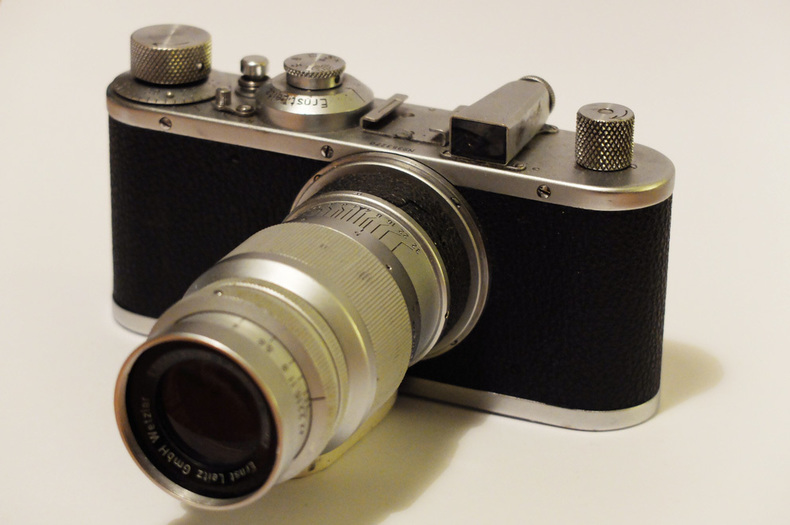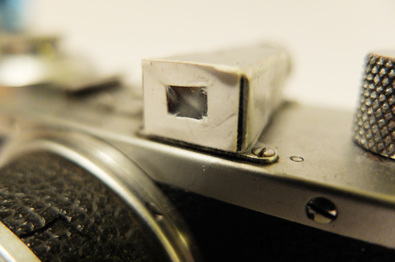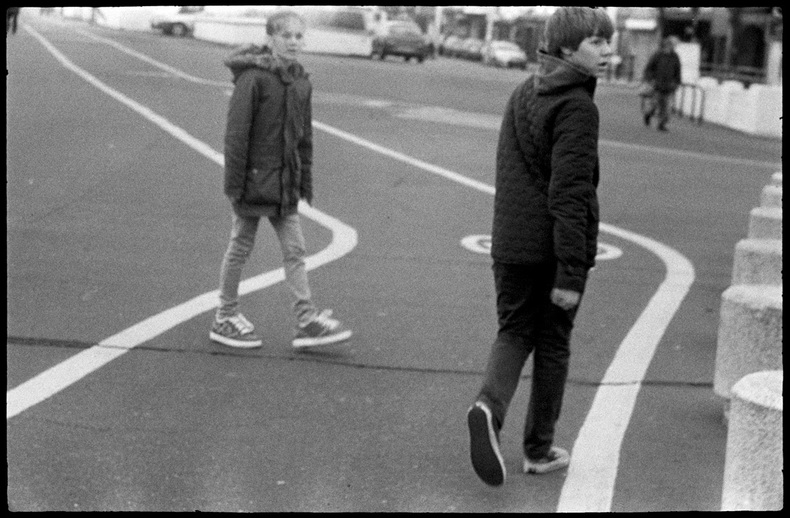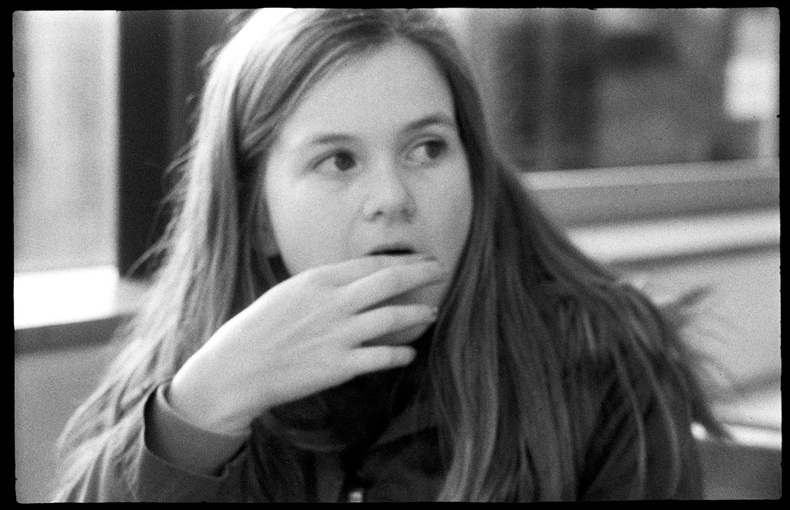
Although Leicas are the archetypal classic camera, Gerry had surprisingly few of them. Apart from his M6, which he bought new, there are only two M39 screw rangefinders and a single Leicaflex. I'm not sure why this is. Maybe it was the cost - Leica collecting can be a very expensive business, or perhaps it was the relatively limited model range. It's also possible that Leicas were just a bit too obvious - as evidenced by much of the collection, Gerry was often more interested in the unusual than the sought-after.
This particular model is a Leica Standard from 1942. It's essentially a development of the original Leica 1, and as such has no rangefinder or lower shutter speeds - it would have been the most basic model at the time.
And the time it was made is interesting - a German camera, made in the middle of WW2, so presumably not originally bought in the UK. After finding out the date of manufacture (googling the serial number - there is a lot of detailed information out there), I had a brief ethical panic - was this camera the product of wartime slave labour? As a major German manufacturer during the war Leitz would have had forced labour assigned to it, but there is evidence the company made efforts to improve conditions for these workers. However, the most interesting thing is that prior to the war Leitz set up what became known as the Leica Freedom Train. Between 1933 and 1939 the company saved hundreds of lives by assigning Jewish staff to overseas posts, allowing them to escape Nazi Germany. So, on balance, Leica is probably on the ethical credit side - although this is a conclusion based on very cursory research so I'm happy to be challenged on that.

As a bit of machinery, the Leica is lovely - it's only as big as it needs to be, is beautifully finished and makes a very satisfying clunk when you hit the shutter. It's easy to see how these cameras effectively launched modern photojournalism - they must have been a revelation when they first appeared in the twenties. As a camera to use now, however, it's a bit challenging...
I know a bad workman blames his tools, but the main problem I had was the lens attached to the camera - a 90mm portrait lens with incredibly tight depth of field. This, coupled with no rangefinder, generally poor light on the days I was shooting, and my apparent inability to judge distances, meant the odds were stacked against me. I should probably have rummaged about for another lens, but I was back in Hastings and the rest of the collection was in Maidstone, so I decided to make a Heath-Robinson viewfinder mask out of card and sellotape and head out in search of Cartier-Bresson's decisive moment.
Here's my classy modification...

...which I clearly got a little wrong - should have mounted the mask higher to allow for parallax. As shown by this image of a couple of feral street children*:

*I can say that - they're my kids.
Nothing in focus in this shot, but I find the composition oddly pleasing. Here's another one that's way off sharp, but quite nice anyway (I'm going to call it impressionistic):

I also took the Leica up to London with me, as I thought there would be good opportunities for a bit of street photography. In an attempt to get more depth of field, I went for lower shutter speeds, resulting in a fair bit of camera shake instead. Still a sharp image eluded me, but I thought the effect on this one was interesting:

I'd obviously twisted the camera as I pressed the shutter, and the centre of the rotation just happens to be the little girl in the very impressive Dr Zhivago hat, so she's sharp (ish) and everything else is a blur. I dismissed this image at first, but the more I look at it the more I like it.
I did get some sharp images in London, but they were really dull ones I'd stopped and thought too much about. This sort of photography works best when you act on instinct, and for that to succeed technically you've got to have the camera set up with a small aperture and a decent shutter speed. A wider angle lens and a faster film would definitely have helped.
This final image is from the first outing on Hastings seafront. Out of the whole film I shot it's the one I'm most happy with:
_large.jpg)
It's a bit grainy, but is at least sharp, apart from the silhouette of Sam, caught in mid-air as he jumps across the rocks. The blur here gives it movement. I'm not sure it's the decisive moment, but it is at least a moment.
